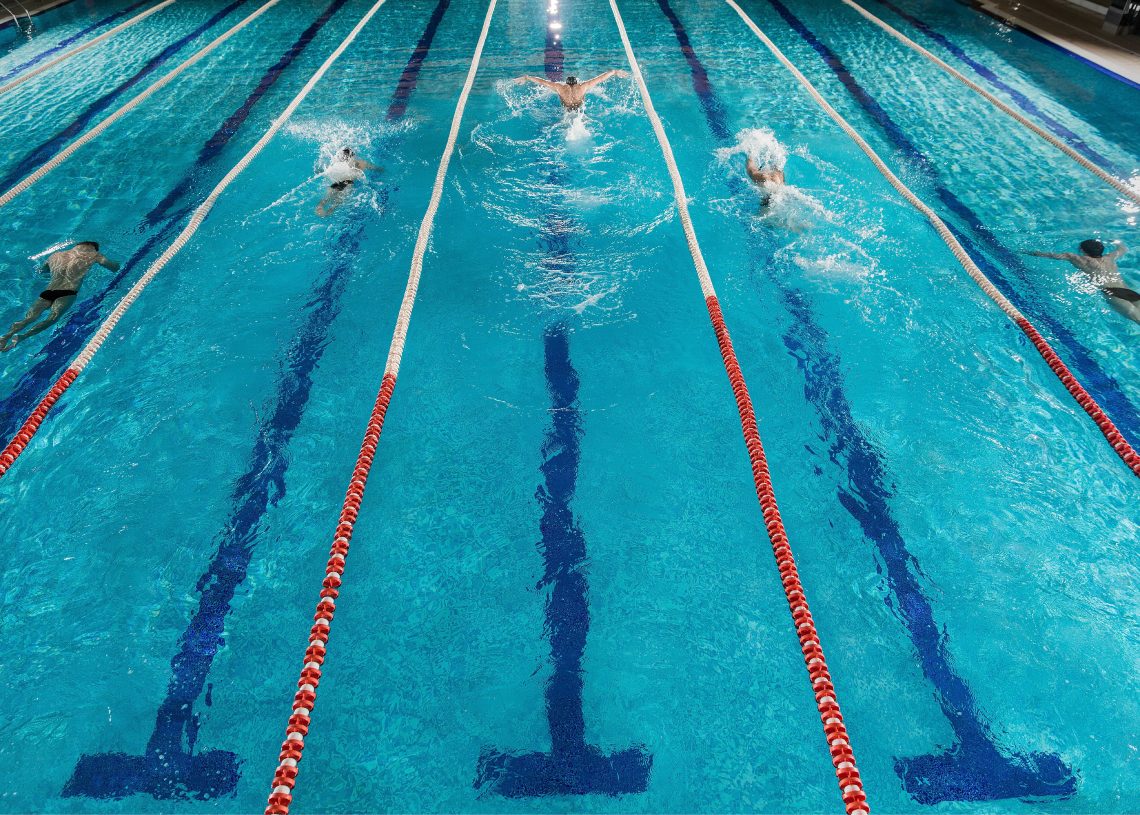
Life in the slow fast lane: how to train in a public pool session
“I’m struggling with pool swimming in public sessions: how can I get a proper swim done?” Simon Griffiths has advice on how to meet your goals when swimming in an open pool session
This is a hard question to answer without knowing the specifics of your circumstances. Are you trying to swim in a general pool session, perhaps attempting to do lengths while others are swimming widths or bobbing around in inflatables, or are you having trouble in a dedicated lane session?
Also, we’re wary about wading into the inflammatory topic of lane etiquette. There are certain swimmers who get enraged by other swimmers not following ‘the rules’. But there is no common agreement about exactly what those rules are or should be. When arrogant, entitled fast swimmers try to share lane space with stubborn, inflexible slower ones, there’s a good chance that one or both will have a meltdown.
Anyway, here goes. If you’ve ever swum in an organised swim session, perhaps as a child or with a triathlon club, you will have been expected to follow certain guidelines. These typically include things like the following:
- Swim in order from fastest to slowest swimmer.
- Leave a 5 second (sometimes 10s) gap between you and the person in front.
- Maintain the gap unless you want to overtake, in which case tap the person in front lightly on the feet to indicate you want to pass or wait until a natural break and ask to move ahead.
- If the person behind you is clearly faster than you and will catch you before the end of the next length, move aside at the end so they can pass.
- Never stop randomly, even if you need to empty your goggles.
- Leave space at the end so the swimmers behind you can finish at the wall.
There are variations but the principle always is to ensure that everyone swimming in the lane gets the same opportunity for an unimpeded swim. It can work well.
However, public sessions are different. Swimmers have widely different speeds, many have never swum in a club nor learned these guidelines. They may react to a tap on the foot as if you had assaulted them. Everyone in the lane is following their own plan rather than a common one. The result can be chaos, as you know. But it doesn’t have to be.
There isn’t a single solution that works every time, but we can suggest some things to try. How effective these are depends on the circumstances and who else is swimming but remember it’s a lot easier to change your behaviour and attitude than it is to change anyone else’s.
Choose a lane to match your speed
First, try to find a pool that offers lane swimming and choose a lane that best matches your speed given who else is in the pool. Then, give the other swimmers in the lane a chance to see that you’re planning to join them. Stand or sit at the end of the pool until everyone has passed and seen you. Indicate that you’re planning to do a training session by having some kit with you such as a float or a session print out. Smile at your fellow swimmers (rather than glare menacingly) and say hello. It helps to set the right tone.
Warm up gently
Start by swimming gently. You need to warm up anyway. If you get stuck behind someone, wait patiently. If they let you pass, say thank you. If not, turn around before you reach the wall to slot in front (rather than trying for an overtake).
Don’t interfere with anyone else’s swim
Do your best not to interfere with anyone else’s swim. One trick that can work well is to swim slower than the other people in the lane and make a point of pausing to let them overtake. They might return the favour later when you speed up.
Be flexible with your session
The number of people in a lane tends to go up and down. If it’s crowded, long steady swims usually work better. Save the sprints for the moments when it’s quieter. Also, does anyone else look to be about the same speed as you and possibly already doing a training set? If so, it might be worth asking to join them, or adapting your session plan so it synchronises with what they are doing rather than clashes.
Try to swim with Zen-like calm
Spread goodwill through the pool. This seems to create more space than big splashy effortful swims do. Don’t swim butterfly to clear the lane as occasionally recommended on social media. This is bullying. Instead, do some kicking or drills at a slower pace. Or change stroke, even in the middle of a length if necessary. If people see you swimming the same pace as them when you’re just kicking, they’re more likely to give you space when you swim.
Take a relaxed approach with pacing
Don’t be a slave to your watch or the pace clock. If you need to cut your rest short and increase it to accommodate other swimmers, you will make life easier for everyone and it won’t ruin your session.
Bring some company
Finally, swim with a friend. That way, even if your swim session is sub-optimal, you can always go for a coffee or drink afterwards and have a good moan about it.
What do you want to know about outdoor swimming? Send us your questions and we’ll do our best to answer: info@outdoorswimmer.com. We love hearing from you.








